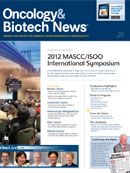Publication
Article
Oncology & Biotech News
Non-Guideline Treatments for Febrile Neutropenia Are Commonly Used, but Ineffective
Author(s):
Two medications that are not recommended in guidelines for the standard treatment of cancer-related febrile neutropenia are commonly used- particularly outside of high-volume medical settings- yet are not effective.
Jason D. Wright, MD
Two medications that are not recommended in guidelines for the standard treatment of cancer-related febrile neutropenia are commonly used— particularly outside of high-volume medical settings— yet are not effective, according to a study presented at ASCO 2012.
The study was launched because febrile neutropenia, which can arise from chemotherapy and is marked by fever and infection risk, “results in morbidity, typically requires hospitalization, results in high medical costs, and is associated with significant mortality,” wrote Jason D. Wright, MD, assistant professor at the Columbia University College of Physicians and Surgeons in New York City, and colleagues.
In the retrospective study, the investigators examined guideline-based and non—guideline-based care for 25,231 patients in a database who had been hospitalized with febrile neutropenia between 2000 and 2010, and how treatment influenced outcomes. They focused on the use of specific therapies during the patients’ first 48 hours of hospitalization: antibiotics recommended in guidelines released by the National Comprehensive Cancer Network or the Infectious Diseases Society of America, and/or two treatments not recommended by those organizations as part of standard care for febrile neutropenia—vancomycin and granulocyte- colony stimulating factor (GCSF).
The investigators found that guideline-based antibiotics were given to 79% of the patients, vancomycin to 37%, and GCSF to 63%. The administration of guideline-based antibiotics rose from 73% to 80% from the first to the last year of the study. The use of vancomycin increased during the study period from 17% to 55%; meanwhile, GCSF use diminished, but less substantially, dropping from 73% to 55%, the authors wrote.
Among patients with febrile neutropenia who were at low risk for infection, prompt initiation of guideline-based antibiotics decreased the risk of discharge to a nursing facility (OR = 0.78; 95% CI, 0.66-0.91) and death (OR = 0.65; 95% CI, 0.50- 0.85), the study demonstrated. For high-risk patients, defined as those with pneumonia, sepsis, hypotension, admission to the intensive care unit, or mechanical ventilation, the administration of guideline-based antibiotics had no effect on outcome. Neither vancomycin nor GCSF drove any improvement in outcome for the patients in the study, the authors wrote.
Guideline-based treatment was most likely to occur in specific medical settings, the team found. Patients treated at high-volume hospitals or teaching hospitals, or by high-volume physicians or hospitalists, were more likely to receive guideline-based antibiotics (P < .05), the authors wrote. They added that patients who were highrisk or black, or who were treated by internists or hospitalists, were more likely to receive vancomycin, while high-volume physicians were less likely to treat with either vancomycin or GCSF (P < .05).
“There is substantial variability in the initial treatment for [febrile neutropenia] in cancer patients,” the authors wrote. “While use of appropriate empiric antibiotics is high, use of non—guideline-based treatments such as vancomycin and GCSF are common. Physician and hospital factors are the most important predictors of both guideline and non–guideline-based treatment.”
Wright JD, Neugut AI, Lewin SN, et al. Deviations from guideline-based therapy for febrile neutropenia in cancer patients. J Clin Oncol. 2012;30(suppl; abstr 6078).









